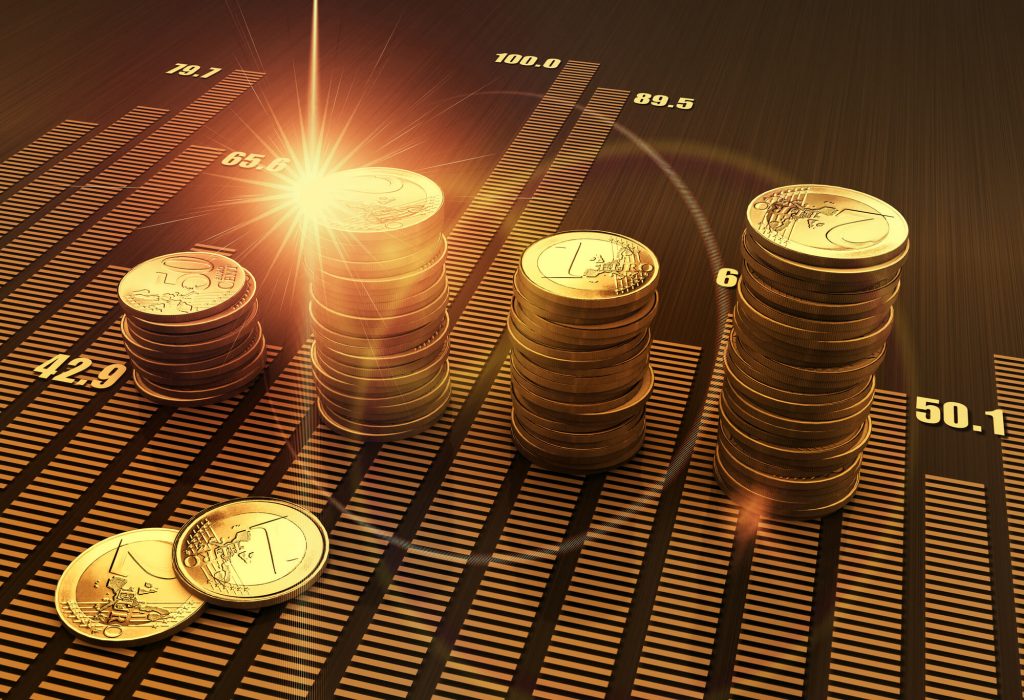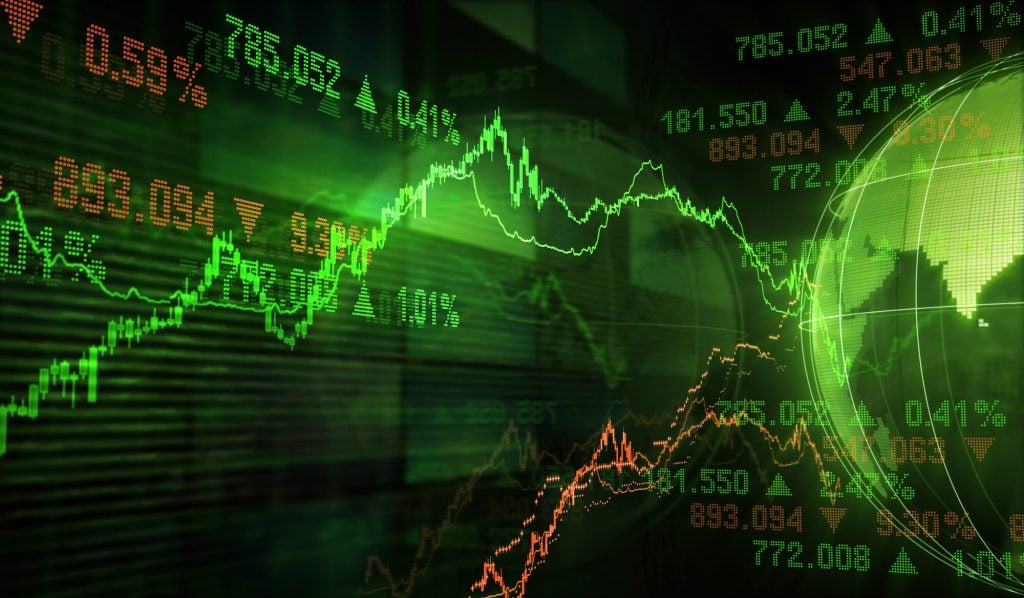A couple of stock market terms that might be familiar even to newer investors are “bull market” and “bear market.” These terms actually have nothing to do with the sale of red capes or wholesale honey. However, you’re not alone if you’ve been searching Google to ask, “What is bull and bear market?”
“Bull vs. bear market” refers to two different market conditions that manifest for an extended period of time — at least a couple of months and often much longer. These two conditions are, simply put, growth and decline.
Both markets are conduits for investor hopes and fears — dreams and nightmares. Believe it or not, they’re not exclusive. A good market can cause concerns, and a slow market can present opportunities.
Before we get to that point, some definitions are in order. What does a bull market vs. bear market look like?

What is a Bull Market?
When we say that the stock exchange is in a “bull market,” that means that times are pretty great.
Bull markets are periods of shareholder optimism. In these times, consumers are spending a lot of money to buy goods and services from public companies. Revenue generally increases across the board. Stock prices are on the way up. People — at least those who invest in the stock market — are generally happy.
There’s a working definition of a bull market put forth by the U.S. Securities and Exchange Commission (SEC). Their website, investor.gov, states: “Generally, a bull market occurs when there is a rise of 20% or more in a broad market index over at least a two-month period.”
Even though this is a helpful guideline, the SEC doesn’t usually make an official “declaration” that a bull market is happening. That role falls to stock watchdogs and media commentators.
The United States has experienced a few notable bull markets in its history. One occurred in the boom after the end of World War II, running from June 1949 to August 1956. Soldiers that were returning to America, rapid suburban construction and growth, and lower energy prices were some of the factors behind this bull market. It remained strong into the 1970s.
The dot-com boom of the 1990s was another very famous bull market. Technology was on the rise at the start of the decade. Almost every American home had a personal computer, and consumers were purchasing software and hardware in great numbers. When the Internet arrived toward the latter half of the decade, it opened up a whole new marketplace for business models like Amazon. Investors went all-in on tech.
In the 21st century, the stock market made some gains on the strength of a real estate bubble from 2002 to 2007. It also regained momentum in the 2010s after the Federal Reserve slashed interest rates, which encouraged more consumer spending after the painful 2008 crash.
Speaking of crashes — let’s talk about bear markets.
What is a Bear Market?
As you might have guessed, bear markets are not so good. They’re times of widespread economic pessimism. In these periods, growth has stalled and the market is in decline. Consumers aren’t buying as much.
The SEC’s definition of a bear market is exactly the opposite of their bull market definition. It’s a market decline of at least 20% over at least two months. When America enters a bear market, it’s likely to have ramifications across the globe.
The most famous bear market in American history is the one that resulted in the Great Depression. The stock market crashed in the autumn of 1929. In late summer, some investors feared that the market was growing too quickly and that stock values were overpriced because of other, overly eager investors who were buying up lots of shares. A massive sell-off occurred on October 24, driving stock prices into the abyss and causing an economic downturn that lasted a decade.
That dot-com bull market of the 1990s we just talked about? It had a very, very bad ending. Investors piled so much capital into a bunch of tech start-ups, many of which didn’t have the best business models (or any business model). Venture capitalists funded them anyway, causing these companies to be overvalued. So much money flowed into these businesses that it resulted in a dot-com “bubble.” Inevitably, it popped! The dot-com sector began to collapse, and in March 2000, stocks crashed, causing what eventually became a two-year bear market.
The Great Recession of 2008 — which, in retrospect, didn’t feel that great — was caused by an implosion in the real estate market. Lenders began issuing high-risk loans (for “subprime mortgages”) to homebuyers with bad credit histories. Long story short, this had repercussions on several financial sectors, including hedge funds and banks. The market took a nosedive on September 15, 2008, after an investment bank, Lehman Brothers, declared bankruptcy.
More recently, fears about an economic slowdown due to the COVID-19 pandemic and shutdown caused a steep stock market loss on February 20, 2020. However, this bear market was short, as the market had fully recovered by the first week of April.
Bull vs. Bear Market: What’s the Deal with the Animal Names?
If you’re wondering where the terms bull market vs. bear market originated, a few theories exist.
The term bear market apparently came first. It referred to the practice of middlemen who worked in selling bearskins. These go-betweens were low on scruples. They sold bearskins they hadn’t even received from the trappers yet and speculated their value at prices far higher than the trappers were likely to charge. (This still happens today; it’s called “short selling.”) These middlemen pocketed the difference but upended everyone else’s profits in the process. The resultant market mess became known as a “bear market.”
There’s not a clear reason why economic good times became known as “bull markets.” One theory comes from a rather cruel practice in Elizabethan England when bears and bulls were chained to a ring in a sporting arena and were attacked by feral dogs for entertainment. This may have created the perception that bulls and bears were opposites, which spread into the financial jargon of the times.
Another explanation centers around the ways that bulls and bears attack their prey. Bulls tend to thrust their heads up when they charge, whereas bears swipe their claws down. So bull markets go up and bear markets go down.

What is the Difference Between a Bull Market vs. Bear Markets?
There are a few verifiable indicators that identify the differences between a bull and bear market. These signs may not always be significant. But they tend to be the most visible, long-lasting side effects that reveal economic health.
One such indicator is gross domestic product (GDP). That’s the total value of all of a country’s goods and services in a given time. It’s a reliable gauge of a nation’s production and an indicator of consumer activity. When customers are spending more, it signifies a bull market. When consumer sales grow stagnant and drop off, it may be a bear market.
The unemployment rate is another dependable indicator of a bull or bear market. If more people are employed and the rate is low, they’re more comfortable spending money. That’s a bull market. But when workers get laid off or furloughed by companies, they can’t spend as freely. Manufacturers lose revenue. The economy slows down and heads toward bear territory.
Another signal that analysts look for is share price movement. Rising stock prices indicate confidence in overall market growth. Declining stock values can predicate an oncoming slowdown.
While some historical downturns like the Great Depression went on for far too long for most people’s tastes, generally speaking, bear markets are shorter than bull markets. Forbes says the average length of a bear market is a little under 10 months. They also say that the average market recovery takes two years to complete. Lastly, they state that the average bull market lasts 973 days — just more than 2½ years.
What is the Best Bull and Bear Market Strategy?
Market fluctuations make some investors a little nervous — either nervously giddy or nervously terrified. It’s hard to predict when bull or bear markets are going to occur from a distance, and it’s almost impossible to know when they’ll end.
But here’s the bottom line: The stock market is extremely resilient. Despite some occasional, hard stretches, its overall history is one of constant growth. It has always recovered. Even after the worst collapses, financial scandals, and economic disasters known to humankind, the stock market always comes back.
The best advice throughout market swings and bear markets is simply to hang on. The bull will eventually return. When a bear market plunges your stock value, you don’t want to start panicking and sell all of your shares off. You’ll be taking a loss. Instead, wait for growth to resume and you’ll retain your profits, especially if you have a diverse portfolio.
Bear markets can be great opportunities to buy stocks for a cheaper price. When top companies turn around and start making profits again, so will you.
One common piece of advice is not to try and “time the market.” That’s when investors attempt to get out of the securities market when prices are high and re-enter it when prices go back down. That is how day traders and high-volume traders earn their living. But it’s dangerous for most retail investors, who aren’t attuned to the constant fluctuations of stock prices.
Whatever happens, don’t panic in a bear market and don’t get too dizzy in a bull market. Make all of your investing decisions with practical thought and reason. Doing so can help to make the ups and downs of a bull vs. bear market much more endurable.

Gorillas, Bulls, and Bears
Gorilla Trades emerged from the ashes of the dot-com bear market in 1999 — and we’re still around today, helping more customers with our data-driven, profitable stock picks. Find out more when you sign up for a free trial.




